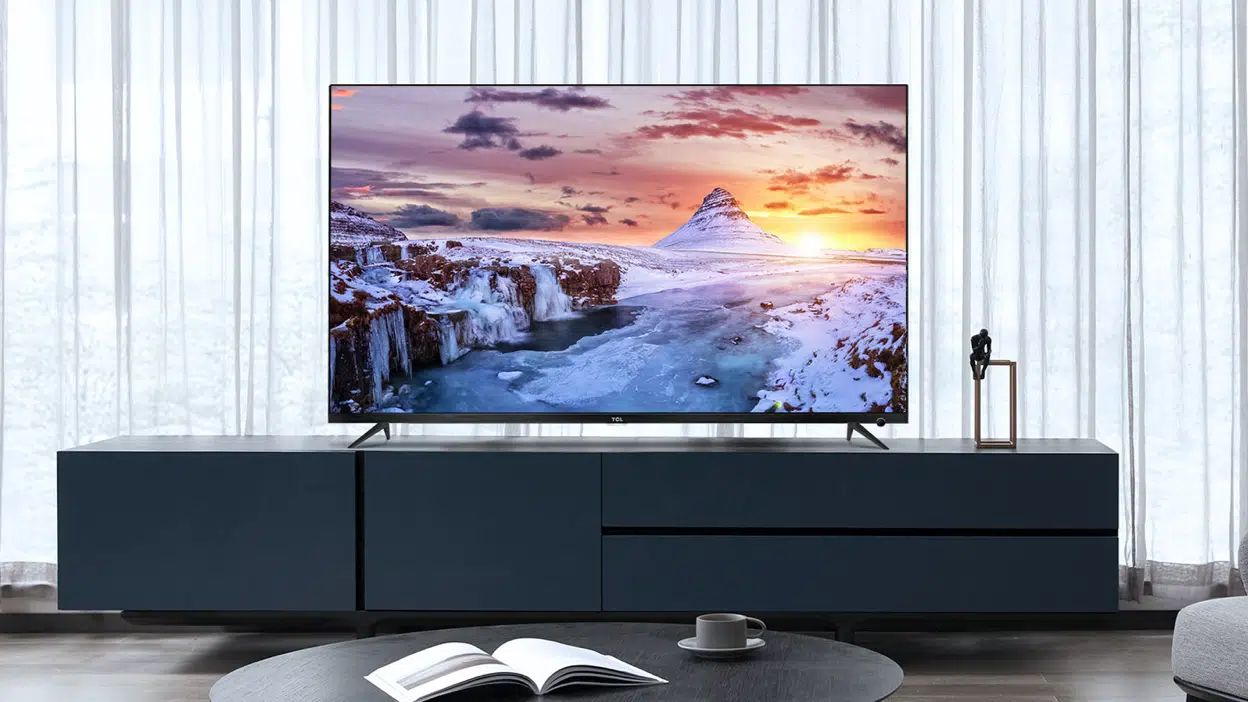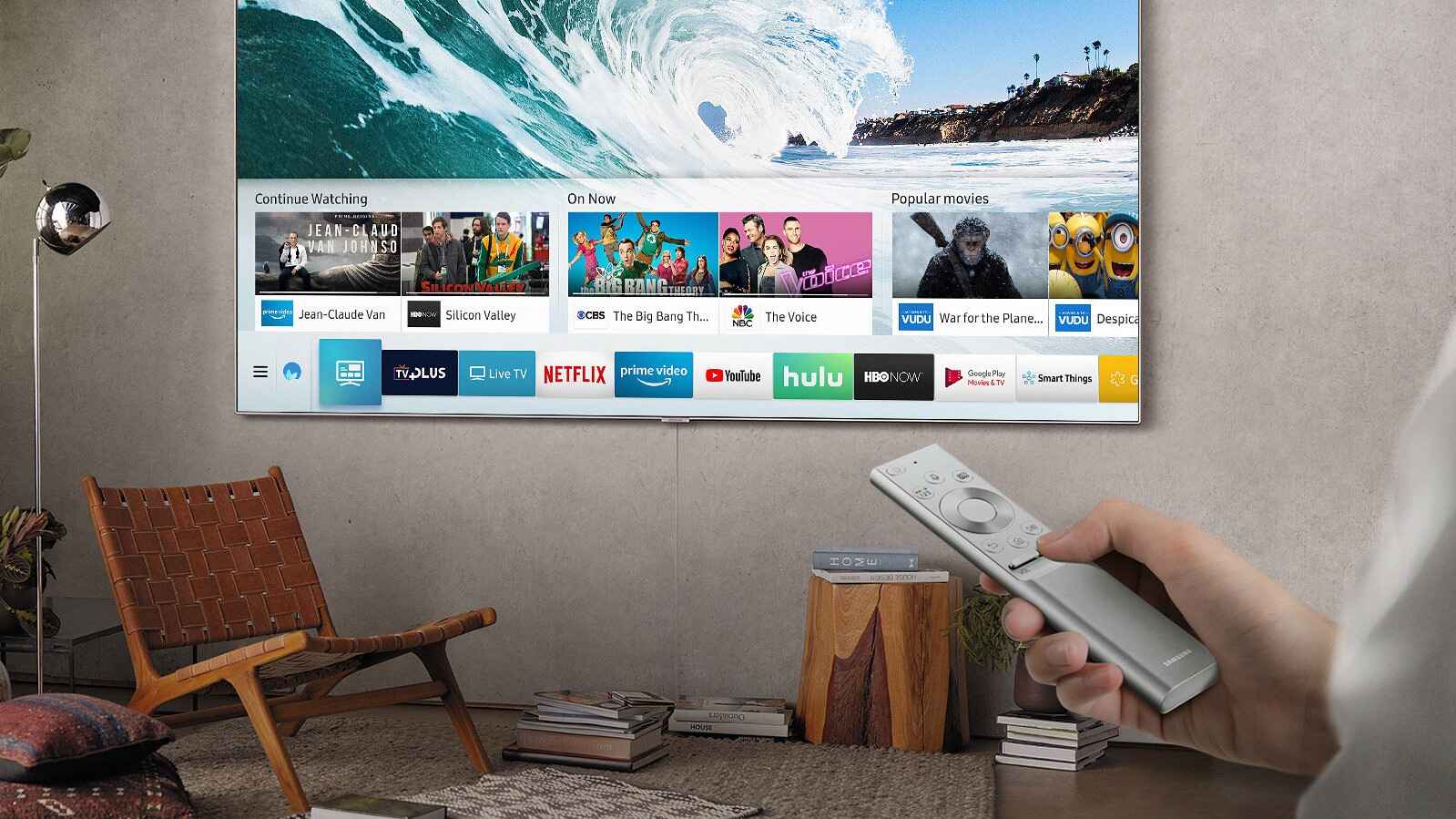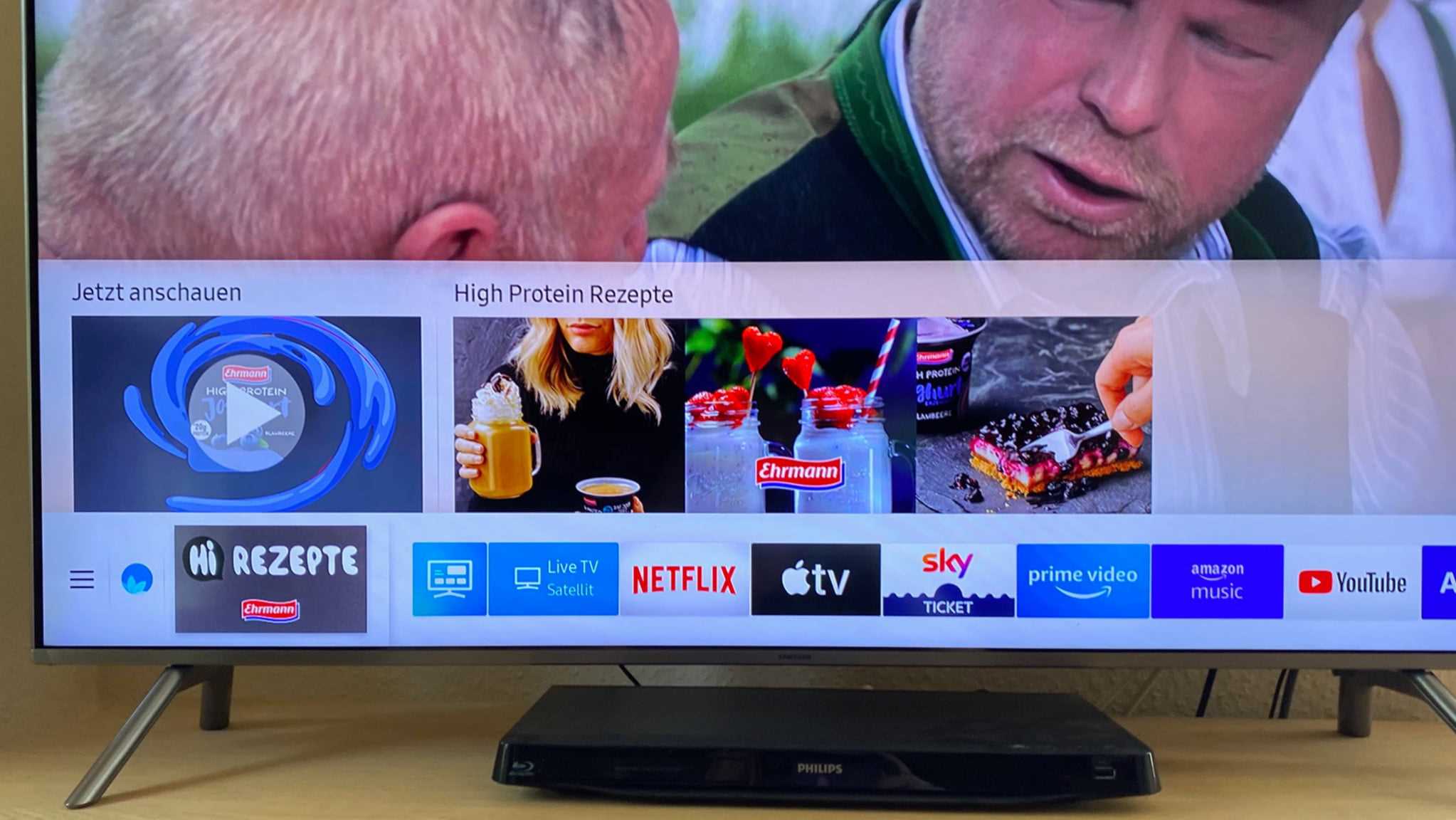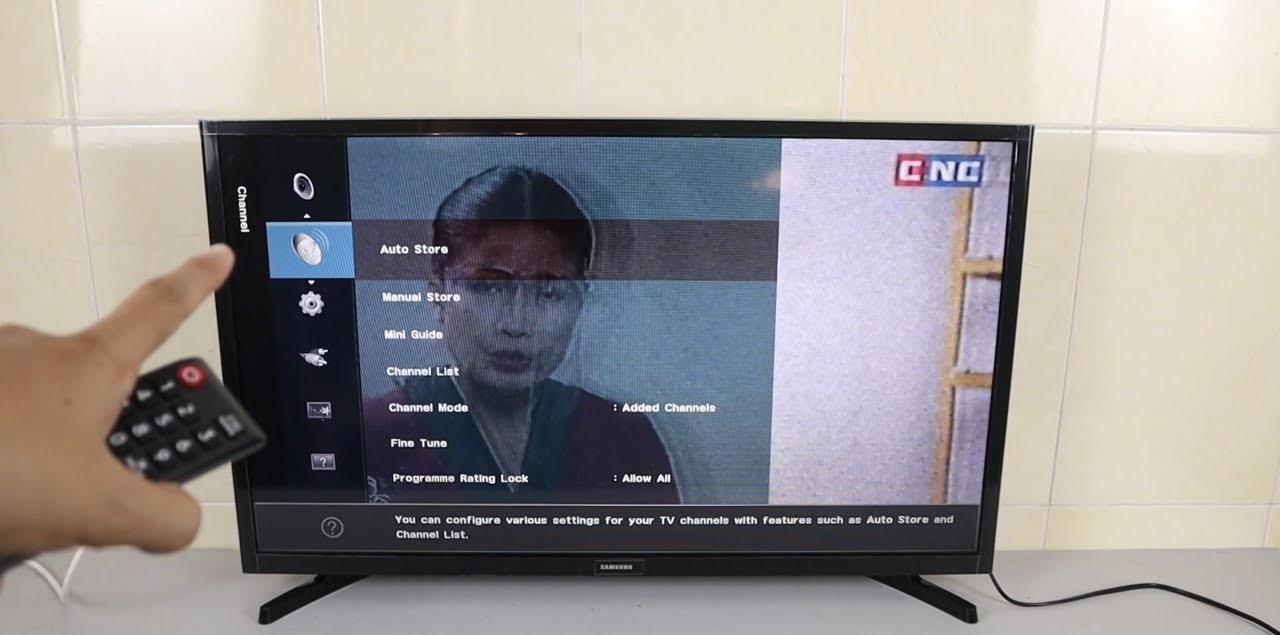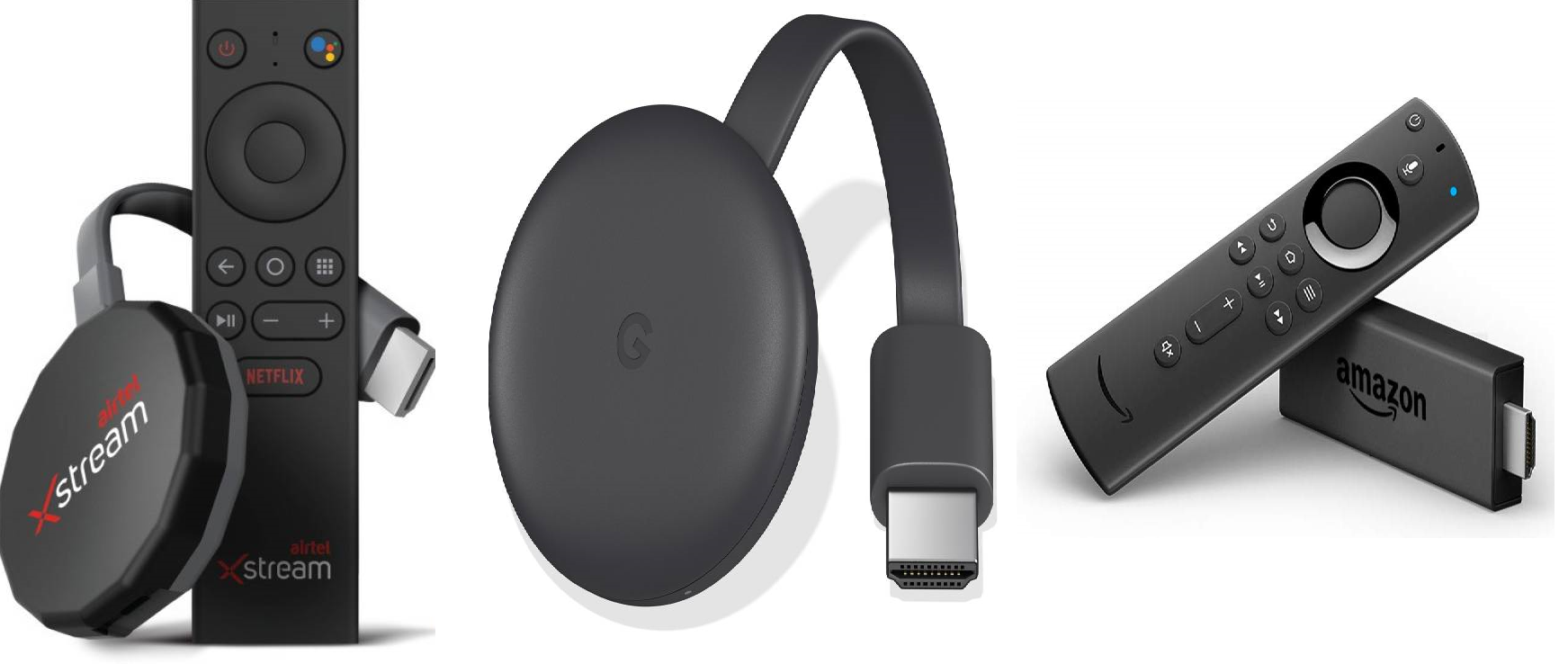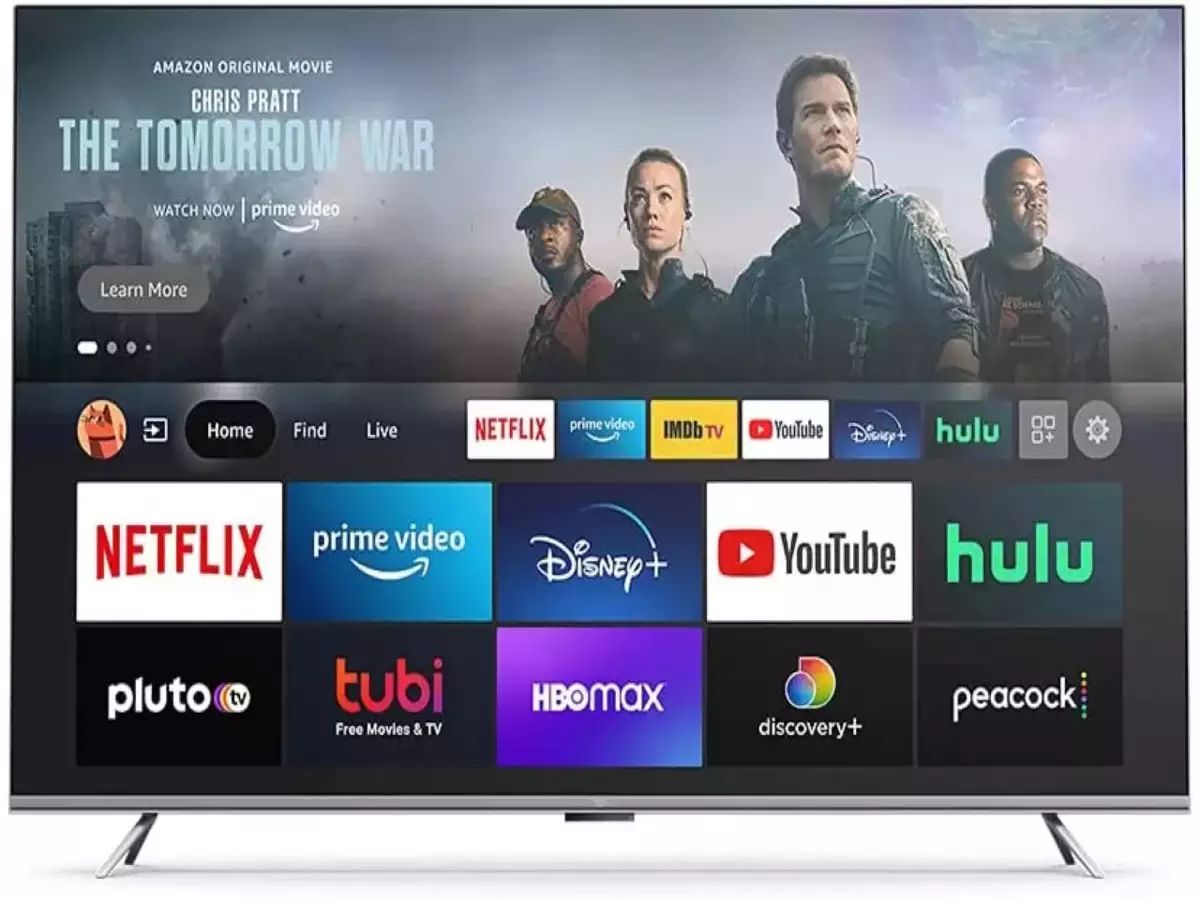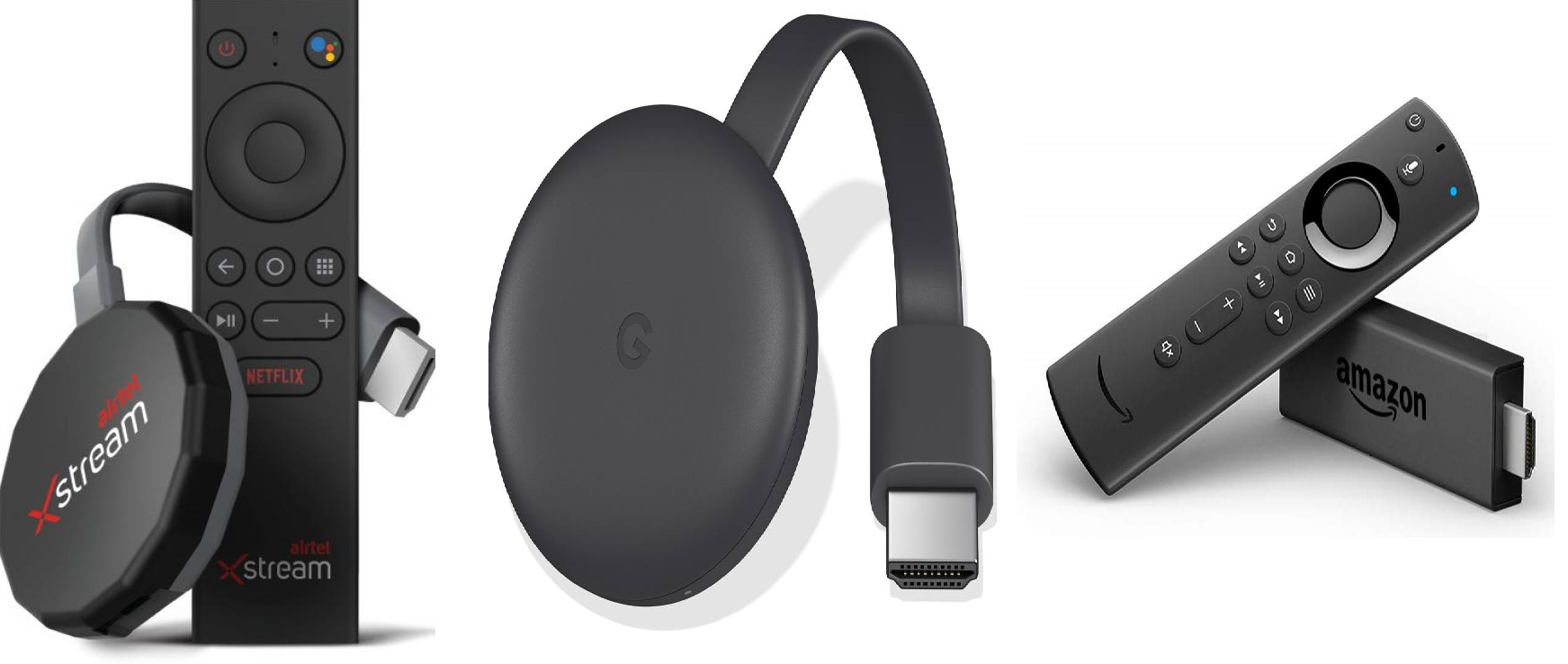Introduction
Welcome to the world of television, where there are endless options to choose from. In recent years, the emergence of smart TVs has revolutionized the way we experience entertainment in our homes. With their advanced features and connectivity options, smart TVs have become a popular choice for consumers. However, before we delve into the differences between smart TVs and regular TVs, let’s first understand what each of them entails.
A regular TV, often referred to as a standard or non-smart TV, is a device that receives broadcast signals and allows you to watch your favorite shows and movies. These TVs have been the norm for decades, with traditional features such as channel tuning, volume control, and basic connectivity options.
On the other hand, a smart TV is a technological marvel that combines the functions of a regular TV with internet connectivity and enhanced features. Smart TVs are designed to provide a seamless browsing and streaming experience, offering a wide range of online content and interactive capabilities.
Now that we have a basic understanding of what each type of TV entails, let’s dive deeper into the differences and unique features that set them apart. In the following sections, we will explore various aspects such as connectivity, internet browsing and streaming, apps and online content, customization, remote control options, and price.
Definition of a Regular TV
A regular TV, also known as a standard or non-smart TV, is a television set that receives broadcast signals through cable, satellite, or an antenna. These TVs have been around for decades and have been the primary source of entertainment for millions of households worldwide. They come in various sizes and display technologies, such as LCD, LED, and OLED.
Regular TVs are designed for basic functionality, allowing you to tune in to your favorite channels and adjust settings like volume and picture quality. They typically have an HDMI or VGA port for connecting external devices like gaming consoles, DVD players, or streaming devices.
One key characteristic of regular TVs is their lack of internet connectivity. Unlike smart TVs, they don’t have built-in Wi-Fi or Ethernet ports, limiting their ability to access online content or stream videos from platforms like Netflix or YouTube directly on the TV itself.
Regular TVs rely solely on broadcast signals to deliver content, meaning you need a cable or satellite subscription or an antenna to watch your favorite shows and channels. While they may lack the advanced features and interactivity of smart TVs, regular TVs are often more affordable and straightforward to use. They are an excellent choice for those who primarily rely on terrestrial or cable broadcasting and don’t require the extra capabilities of a smart TV.
In recent years, regular TVs have seen some technological advancements, such as improved picture quality and slim designs. However, their main focus remains on providing a reliable and straightforward viewing experience, without the bells and whistles of smart functionality.
In the next sections, we will explore the various features and capabilities that set smart TVs apart from regular TVs, giving users a whole new level of entertainment and convenience.
Definition of a Smart TV
A smart TV is a television set that not only receives broadcast signals but also connects to the internet, allowing users to access a vast array of online content and interactive features. These TVs have gained immense popularity in recent years due to their advanced capabilities and enhanced viewing experience.
Smart TVs come equipped with built-in Wi-Fi or Ethernet ports, enabling seamless connectivity to the internet. This connectivity opens up a world of possibilities, as users can access popular streaming platforms like Netflix, Hulu, Amazon Prime Video, and YouTube directly on their TV screens. They can stream movies, TV shows, and other videos without the need for additional devices or subscriptions.
In addition to streaming services, smart TVs also provide internet browsing capabilities. With a web browser installed, users can surf the internet, check emails, and even engage in social media interactions right from the comfort of their living rooms.
One of the defining features of smart TVs is their ability to run applications, commonly referred to as apps. These apps offer a wide range of entertainment options, including games, music streaming services, news apps, and more. Users can download apps from an app store, just like they would on a smartphone or tablet, and customize their TV experience based on their preferences.
Smart TVs also often come with voice recognition technology, allowing users to control the TV and navigate through various menus using voice commands. This feature enhances convenience and accessibility, as users can simply speak their commands instead of manually operating a remote control.
While regular TVs focus on providing a basic viewing experience, smart TVs offer a whole new level of customization and personalization. Users can customize their home screens, arrange their favorite apps for easy access, and even connect their smart TV to other smart devices in their homes for a seamless interconnected experience.
It is worth noting that smart TVs come in a variety of operating systems, including popular options like Android TV, WebOS, Tizen, and Roku OS. Each operating system offers its own unique features and user interface, catering to different preferences and requirements.
In the next sections, we will explore further differences between smart TVs and regular TVs, such as connectivity options, internet browsing and streaming capabilities, apps and online content, customization features, remote control options, and pricing.
Connectivity
One of the key differences between smart TVs and regular TVs lies in their connectivity options. While regular TVs typically have limited connectivity, smart TVs are designed to provide seamless integration with the internet and various external devices.
A regular TV relies on traditional methods of connectivity, such as HDMI and VGA ports, to connect external devices like gaming consoles, Blu-ray players, or set-top boxes. These ports allow for a one-way connection, meaning you can display the content from the external device on your TV screen, but you cannot access the internet or stream online content directly from the TV itself.
In contrast, smart TVs have built-in Wi-Fi or Ethernet ports, allowing them to connect to your home network and access the internet. This enables a wide range of features, including online streaming, browsing, and accessing a vast selection of apps. With internet connectivity, smart TVs can download software updates, keeping them up-to-date with the latest features and optimizations.
Furthermore, smart TVs often have multiple HDMI ports, USB ports, and even Bluetooth capabilities, providing more flexibility when it comes to connecting external devices and accessories. This allows you to connect devices like gaming consoles, soundbars, and media players, enhancing your overall entertainment experience.
Additionally, some smart TVs support wireless screen mirroring technologies such as Chromecast, AirPlay, or Miracast. These technologies enable you to mirror the content from your smartphone, tablet, or computer directly onto your TV screen, expanding the possibilities for multimedia consumption and sharing.
It is important to note that the quality and reliability of connectivity can vary between different smart TV models and brands. Some smart TVs may have more robust Wi-Fi capabilities or support faster Ethernet connections, ensuring smoother streaming and browsing experiences. If a stable and fast internet connection is crucial to your viewing experience, it is essential to research the connectivity capabilities of the smart TV before making a purchase.
In the next sections, we will explore other aspects that differentiate smart TVs from regular TVs, such as internet browsing and streaming capabilities, the availability of apps and online content, customization options, remote control features, and pricing.
Internet Browsing and Streaming
One of the significant advantages of a smart TV over a regular TV is its ability to browse the internet and stream online content directly on the television screen. Smart TVs provide a seamless browsing and streaming experience, offering access to a wide range of online platforms and services.
With a smart TV, you can easily connect to the internet using Wi-Fi or an Ethernet cable, giving you access to popular web browsers such as Google Chrome, Mozilla Firefox, or built-in proprietary browsers. This enables you to browse websites, check emails, shop online, and even engage in social media interactions from the comfort of your couch.
In addition to web browsing, smart TVs offer effortless streaming of online content. You can access popular streaming platforms like Netflix, Hulu, Amazon Prime Video, and YouTube directly through the TV’s interface. This means you can enjoy your favorite movies, TV shows, documentaries, and other videos without the need for additional devices or subscriptions.
Smart TVs also often offer 4K Ultra HD streaming capabilities, allowing you to enjoy content in stunning clarity and detail if your internet connection supports it. Some high-end smart TVs may even support HDR (High Dynamic Range) technology, enhancing the contrast and color accuracy of the streamed content for a more immersive viewing experience.
Moreover, smart TVs provide users with the ability to pause, rewind, and fast-forward through content, similar to the functionality offered by DVRs or cable/satellite set-top boxes. This gives you greater control over your viewing experience, allowing you to easily navigate through episodes of a TV series or skip to your favorite scenes in a movie.
It is worth noting, however, that the performance of internet browsing and streaming on a smart TV can be influenced by various factors, including the speed and stability of your internet connection. A slower or intermittent connection may result in buffering issues or lower-quality video playback. If you plan to use your smart TV primarily for streaming, it is recommended to have a reliable high-speed internet connection for optimal performance.
In the next sections, we will explore other distinguishing features of smart TVs, such as the availability of apps and online content, customization options, remote control features, and pricing.
Apps and Online Content
One of the standout features of smart TVs is their access to a wide variety of apps and online content. Unlike regular TVs, which are limited to broadcast channels, smart TVs offer a vast selection of entertainment options.
Smart TVs come equipped with an app store or marketplace, similar to those found on smartphones and tablets. These app stores provide access to a variety of apps specifically designed for the TV environment. From streaming services like Netflix, Hulu, and Disney+ to music streaming apps like Spotify and Pandora, there is an extensive array of entertainment options available.
These apps allow you to watch movies and TV shows, listen to music, play games, and even explore educational content. With the ability to download and install apps directly on the TV, you can customize your entertainment experience to suit your preferences and interests.
In addition to popular streaming services, smart TVs also provide access to a wide range of online content. Through the TV’s built-in browser, you can visit websites, read news articles, follow social media feeds, and explore various online platforms. This expands the possibilities for consuming online content without the need for a separate device like a computer or smartphone.
Furthermore, smart TVs often offer compatibility with popular media streaming devices such as Roku, Apple TV, or Amazon Fire TV. This allows you to expand your access to even more apps and content by connecting an external streaming device to your smart TV.
Smart TVs also support casting or mirroring features, allowing you to stream content from your smartphone or tablet directly onto the TV screen. Whether it’s photos, videos, or even presentations, this feature enables easy sharing and viewing of content without the need for cables or additional devices.
It’s important to note that the availability of apps and online content can vary depending on the smart TV’s operating system or manufacturer partnerships. While popular streaming services and apps are often available across different platforms, there may be variations in app offerings and user interfaces among different smart TV brands.
In the next sections, we will explore other notable features of smart TVs, including customization options, remote control features, connectivity options, and pricing.
Customization and Personalization
Smart TVs offer a high level of customization and personalization, allowing users to tailor their viewing experience to their preferences and desires. Unlike regular TVs, which often have limited customization options, smart TVs offer a range of features that allow you to make the TV truly your own.
One aspect of customization on smart TVs is the ability to personalize your home screen. You can arrange your favorite apps, streaming services, and frequently accessed content in a way that suits your needs. This allows for easy access to your preferred entertainment options, eliminating the need to navigate through multiple menus and channels to find what you want to watch.
Smart TVs often offer different themes or wallpaper options, allowing you to change the look and feel of the interface to match your style or mood. Whether you prefer a minimalist design or vibrant visuals, you can customize the appearance of the TV to suit your taste.
Another feature that enhances customization is the ability to create user profiles on smart TVs. This is particularly useful for households with multiple users, as each person can have their own personalized settings, favorites, and recommendations. Each user can have their own logins for streaming services, ensuring that everyone’s viewing history and preferences are kept separate.
Smart TVs also support voice control and voice recognition technology, allowing you to navigate through menus, launch apps, and control various TV functions using voice commands. This feature adds convenience and personalization, as you can simply speak your desired actions instead of manually operating a remote control.
Furthermore, smart TVs can be integrated with other smart devices in your home, such as smart speakers, smart lights, or even a smart home hub. This enables you to control your TV and other connected devices through a unified interface, creating a seamless and interconnected smart home experience.
It’s worth mentioning that the level of customization and personalization may vary depending on the specific model or brand of the smart TV. While most smart TVs offer a decent level of customization options, it’s essential to research and compare different models to find the one that best suits your preferences and needs.
In the next sections, we will explore other significant features of smart TVs, including remote control options, connectivity capabilities, internet browsing and streaming functionalities, and pricing.
Remote Control and Voice Recognition
Smart TVs offer advanced remote control options and voice recognition technology, allowing for easier and more intuitive interaction with the television and its features. These features enhance the user experience and provide convenient ways to navigate through menus, control playback, and access various functions.
The remote control for a smart TV is typically designed with additional buttons and functionalities compared to a regular TV remote. Smart TV remotes often have dedicated buttons for popular streaming services, allowing you to access your favorite content directly with a single press. They may also include a touchpad or motion-sensing capabilities for smoother navigation through menus and options.
One of the standout features of many smart TV remotes is the built-in voice recognition technology. By simply pressing a dedicated voice control button, you can give voice commands to the TV. This allows you to change channels, adjust volume, launch apps, search for content, and perform various other actions, all with your voice.
Voice recognition technology has significantly improved in recent years, becoming more accurate and responsive. It eliminates the need to remember specific button combinations or navigate through complex menus, making it a more user-friendly and efficient method of controlling the TV.
With voice recognition, you can say commands like “Open Netflix,” “Search for action movies,” or “Turn off the TV,” and the smart TV will understand and execute the requested action. It’s important to note that the availability and accuracy of voice recognition can vary depending on the specific smart TV model and manufacturer.
Furthermore, smart TVs often integrate with popular voice assistants like Amazon Alexa or Google Assistant. This means you can control your smart TV using voice commands through these voice assistants if you have compatible devices or speakers in your home. It expands the convenience and functionality of voice control beyond just the TV itself.
Remote control and voice recognition features make interacting with a smart TV more natural and user-friendly. They eliminate the need for complex button presses and menus, enabling seamless navigation and control of the TV’s functions.
In the next sections, we will explore other significant features of smart TVs, including connectivity options, internet browsing and streaming capabilities, apps and online content availability, customization options, and pricing.
Price
When it comes to pricing, there is a difference between smart TVs and regular TVs. Smart TVs typically tend to be more expensive than regular TVs due to their additional features, advanced technology, and internet connectivity capabilities.
Regular TVs, also known as non-smart TVs, are generally more affordable, as they focus on providing a standard television viewing experience without the advanced functions and connectivity options of smart TVs. These TVs are often a budget-friendly choice for those who primarily rely on cable or satellite broadcasting and do not require internet connectivity or streaming capabilities.
The cost of regular TVs varies depending on factors such as the size, brand, display technology, and additional features. You can find regular TVs in a wide price range, from entry-level models to high-end ones with superior picture quality and design.
On the other hand, smart TVs come with a higher price tag due to their added functionality and internet connectivity. The cost of a smart TV is influenced by factors such as the brand, screen size, display technology, operating system, and additional features like HDR support and voice recognition capabilities.
As technology advances and becomes more accessible, the price gap between regular TVs and smart TVs has been decreasing. Entry-level smart TVs are now more affordable than ever, making them more accessible to a wider range of consumers. However, high-end smart TVs with larger screens and premium features can still be quite expensive.
It’s important to note that while smart TVs may have a higher upfront cost compared to regular TVs, their added functionality and capabilities can provide value for money in the long run. The ability to stream online content, browse the internet, and access a wide range of apps and services can enhance your entertainment experience and offer a more convenient way to enjoy content.
Ultimately, the price of a TV depends on your budget and specific needs. It’s recommended to compare the features, performance, and prices of different models to find the best option that fits your requirements and offers the best value for your money.
In the next sections, we will explore other significant features of smart TVs, including internet browsing and streaming capabilities, apps and online content availability, customization options, remote control features, and connectivity capabilities.
Conclusion
In conclusion, smart TVs and regular TVs differ in several aspects, each offering its own set of benefits and limitations. Regular TVs, also known as non-smart TVs, provide a simple and affordable way to enjoy television broadcasts and connect external devices for a basic viewing experience. They lack internet connectivity and advanced features but are a suitable choice for those who prioritize traditional TV channels and do not require online streaming or browsing capabilities.
On the other hand, smart TVs are designed to provide a more immersive and interactive entertainment experience. With their built-in internet connectivity, smart TVs allow users to browse the web, stream online content from platforms like Netflix and Hulu, and access a wide range of apps for personalized entertainment. They also offer enhanced features like voice control, customization options, and compatibility with other smart devices, providing a more convenient and connected viewing experience.
However, it’s important to consider factors such as price, internet connectivity quality, and the availability of apps and content when deciding between a smart TV and a regular TV. Regular TVs are generally more affordable, making them a suitable option for those on a budget or who primarily rely on traditional broadcasting. On the other hand, smart TVs come at a higher price point but offer a wider range of features and content options.
Ultimately, the choice between a smart TV and a regular TV depends on your specific needs and preferences. If you value internet connectivity, streaming capabilities, and a customizable entertainment experience, a smart TV may be the ideal choice for you. However, if you prefer a more straightforward viewing experience and have a limited budget, a regular TV can still provide adequate enjoyment.
It’s advisable to research and compare different models and brands to find the TV that best suits your needs and offers the features and performance you desire. Whether you choose a smart TV or a regular TV, both options can provide hours of entertainment and elevate your viewing experience.
In this ever-evolving world of technology, the choice between a smart TV and a regular TV ultimately depends on your personal preferences and your desired viewing experience. The decision should be based on factors such as budget, desired features, and intended usage. Whether you choose a smart TV for its advanced features and connectivity options, or a regular TV for its simplicity and affordability, both options have their advantages and can provide hours of entertainment. Happy TV shopping!







